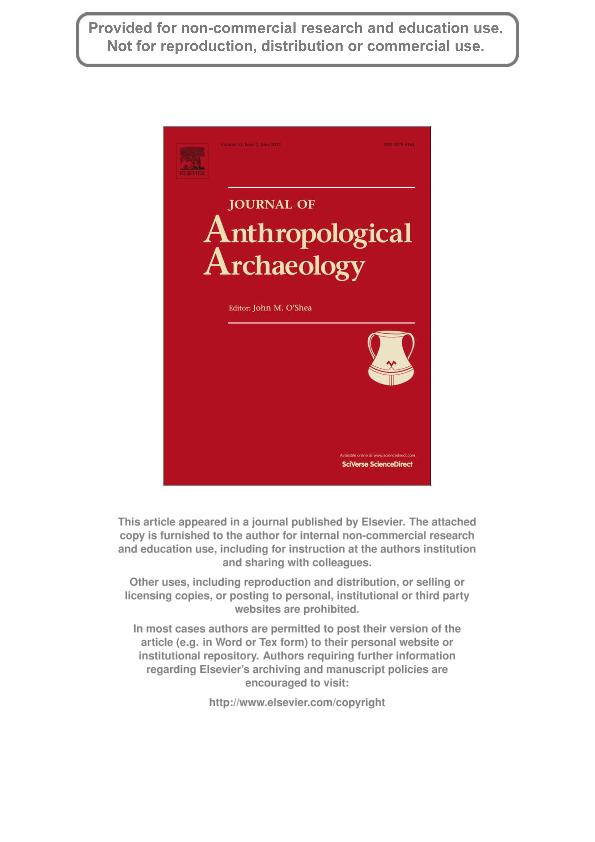Artículo
Human corpse manipulation and the body as symbol: A case study from the Eastern Pampa–Patagonia transition (Argentina) during the Final Late Holocene
Fecha de publicación:
12/2011
Editorial:
Elsevier Inc
Revista:
Journal of Anthropological Archaeology
ISSN:
0278-4165
Idioma:
Inglés
Tipo de recurso:
Artículo publicado
Clasificación temática:
Resumen
Human body manipulation and secondary burials are widespread funerary practices in many areas of the world. The archaeology of the Pampas and North-Eastern Patagonia, Argentina, is no exception. In this paper, archaeological case studies from the lower basin of the Colorado River during the Final Late Holocene (ca. 1000–250 years BP) are presented and discussed. Secondary burials were recovered that indicated an intentional manipulation of bodies. Evidences of cut marks and the coloring of bone surfaces were recorded. The bundles were composed of individuals of both sexes and diverse age categories. The Pampean region and North-Eastern Patagonia witnessed significant hunter–gatherer population dynamics during the last 1000 years BP. Climatic, ecologic, demographic, and economic explanations have been proposed as the background to these changes. In this paper, it is argued that accompanying these factors, as part of a broader socio-cultural scenario, were significant social interaction networks and processes of social complementarity between groups. In this context, it is proposed that the complexity observed in relation to the handling of bodies is part of a worldview in which the body was seen as material culture – as a symbol – that played an important role for the community in group identity maintenance in a cultural context undergoing significant organizational changes.
Archivos asociados
Licencia
Identificadores
Colecciones
Articulos(INCUAPA)
Articulos de INVESTIGACIONES ARQUEOLOGICAS Y PALEONTOLOGICAS DEL CUATERNARIO PAMPEANO
Articulos de INVESTIGACIONES ARQUEOLOGICAS Y PALEONTOLOGICAS DEL CUATERNARIO PAMPEANO
Citación
Bayala, Pablo Darío; Martinez, Gustavo Adolfo; Flensborg, Gustavo Ariel; Human corpse manipulation and the body as symbol: A case study from the Eastern Pampa–Patagonia transition (Argentina) during the Final Late Holocene; Elsevier Inc; Journal of Anthropological Archaeology; 31; 2; 12-2011; 215-226
Compartir
Altmétricas




